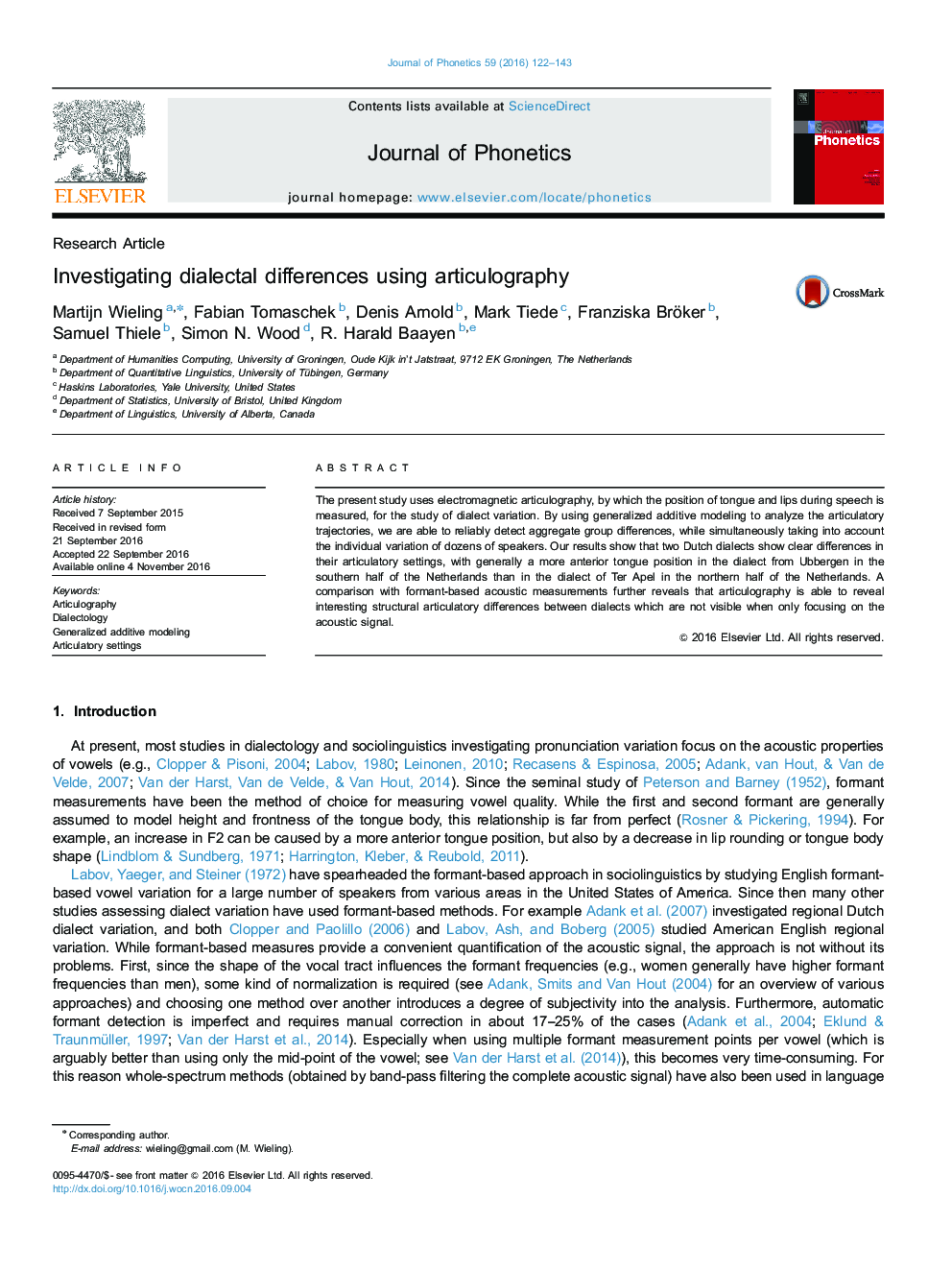| کد مقاله | کد نشریه | سال انتشار | مقاله انگلیسی | نسخه تمام متن |
|---|---|---|---|---|
| 5124118 | 1488096 | 2016 | 22 صفحه PDF | دانلود رایگان |
- Dutch dialects show distinct and characteristic tongue positions during speech.
- Articulography may reveal dialect patterns not visible in the acoustic signal.
- Generalized additive modeling is suitable for analyzing articulatory trajectories.
The present study uses electromagnetic articulography, by which the position of tongue and lips during speech is measured, for the study of dialect variation. By using generalized additive modeling to analyze the articulatory trajectories, we are able to reliably detect aggregate group differences, while simultaneously taking into account the individual variation of dozens of speakers. Our results show that two Dutch dialects show clear differences in their articulatory settings, with generally a more anterior tongue position in the dialect from Ubbergen in the southern half of the Netherlands than in the dialect of Ter Apel in the northern half of the Netherlands. A comparison with formant-based acoustic measurements further reveals that articulography is able to reveal interesting structural articulatory differences between dialects which are not visible when only focusing on the acoustic signal.
Journal: Journal of Phonetics - Volume 59, November 2016, Pages 122-143
